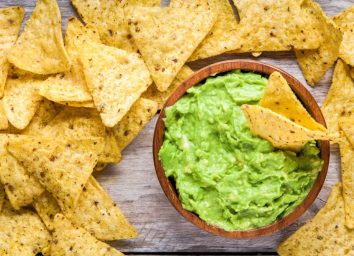15 Gross Things That May Be Lurking In Your Water
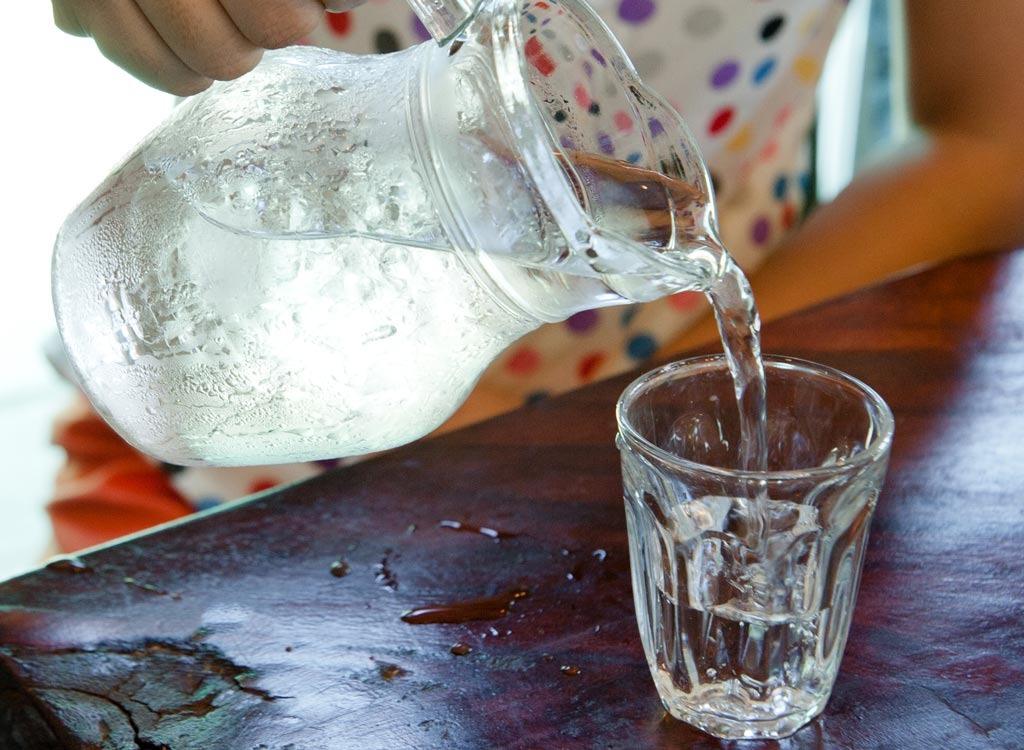
Water literally shows up everywhere in our lives. We tote water bottles around all day, we wash veggies with it, and we even make baby formula using it. Don't forget your morning shower, your coffee and instant oatmeal at breakfast, and those summer plunges in the pool.
But have you ever stopped to consider what's actually lurking in your H20? Aside from the mysterious particles you sometimes see floating around, there's a whole world of invisible stuff taking up residence in the water you use every single day.
The good news? Most of these nasties are fairly harmless, as long as they are ingested in super-low quantities and you have a healthy immune system. A water filtration system or pitcher (we like the ZeroWater 10 Cup Water Pitcher) can also do wonders for your tap water. If you're curious to know which types of contaminants are most common in your geographic area, get in touch with your water provider or your local water filtration dealer (think Culligan) to find out more about your H20. In the meantime, here's a rundown on some of the junk that may be swimming in your water. And for more hidden toxins that are getting into your food and drink, find out the The Scary Toxins Hiding in Your Cookware and Storage Containers!
Disease-Causing Microbes
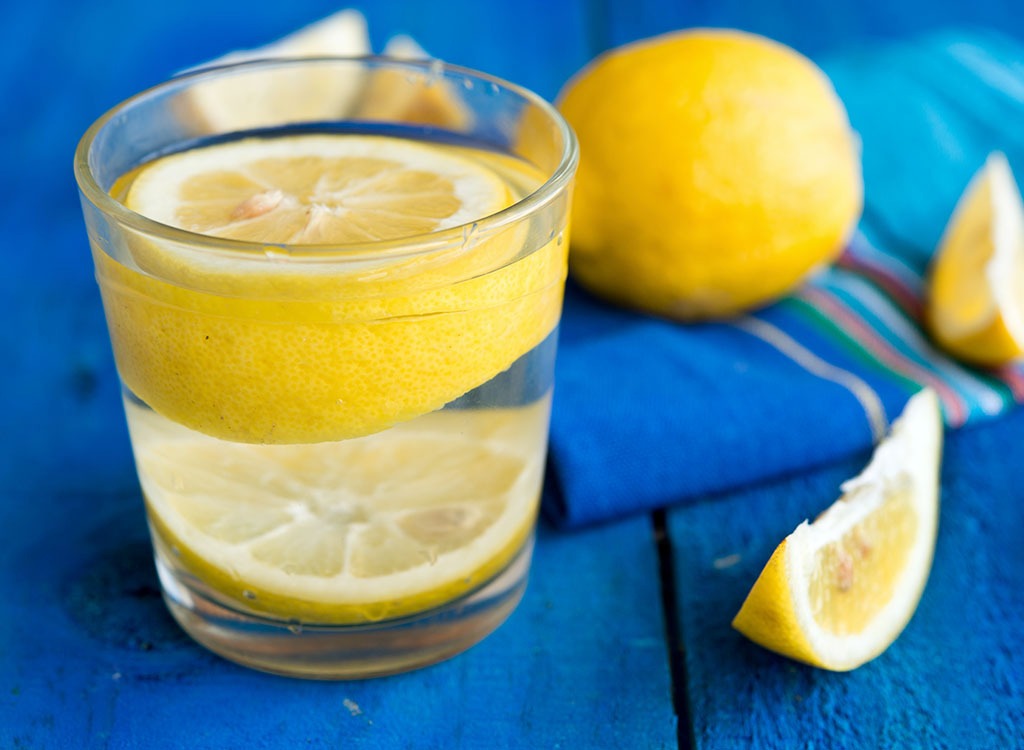
Sure, a squeeze of fresh lemon juice in your water can be super refreshing, but you should think twice before you ask for a wedge of the citrus if you're dining out. A study published in the Journal of Environmental Health found that 70 percent of restaurant lemon wedges contained disease-causing microbes. It's not totally clear where the microbes came from, though the authors suggested they may be the result of employees touching human feces or raw meat, and, we're guessing, not using tongs to handle the lemons. Ick. If we didn't totally ruin your appetite, go ahead and check out our 35 Tips for Being Healthy at Restaurants before your next dinner out.
Arsenic
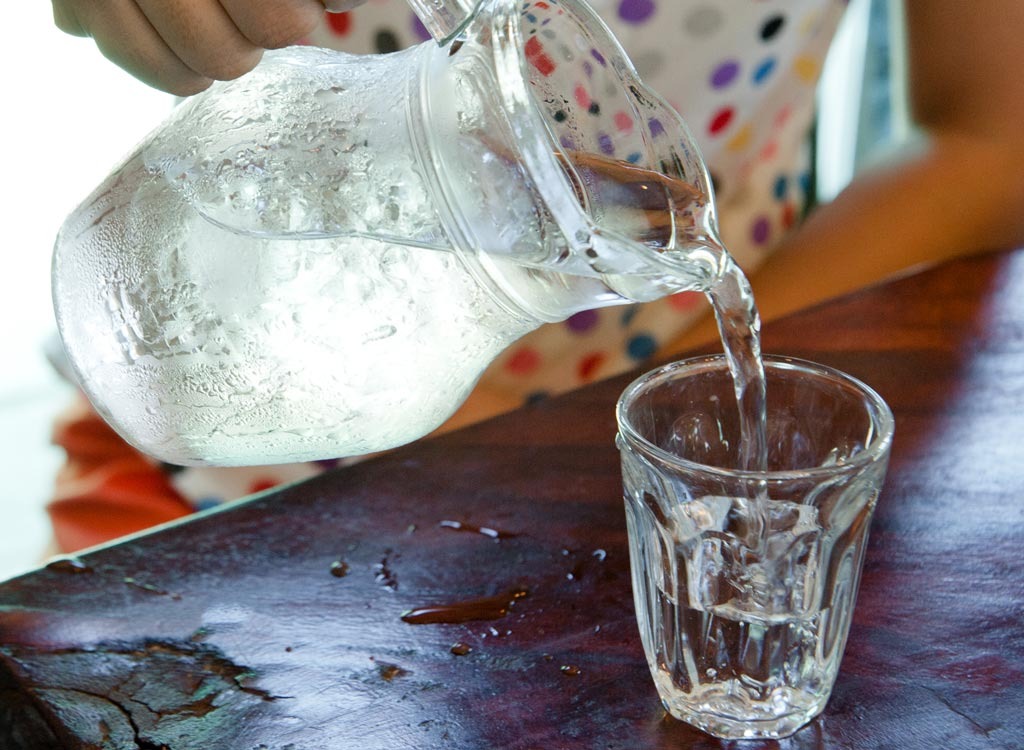
Arsenic occurs naturally but also ends up in groundwater thanks to wood preservatives, petroleum, and pesticides. It can be dangerous, too. Researchers at Columbia University studied children from three Maine school districts and found those exposed to arsenic in drinking water had lower IQs. An at-home water filtration system should protect you and your family from this toxic element, which is more common in some regions than in others.
Shower Pathogens
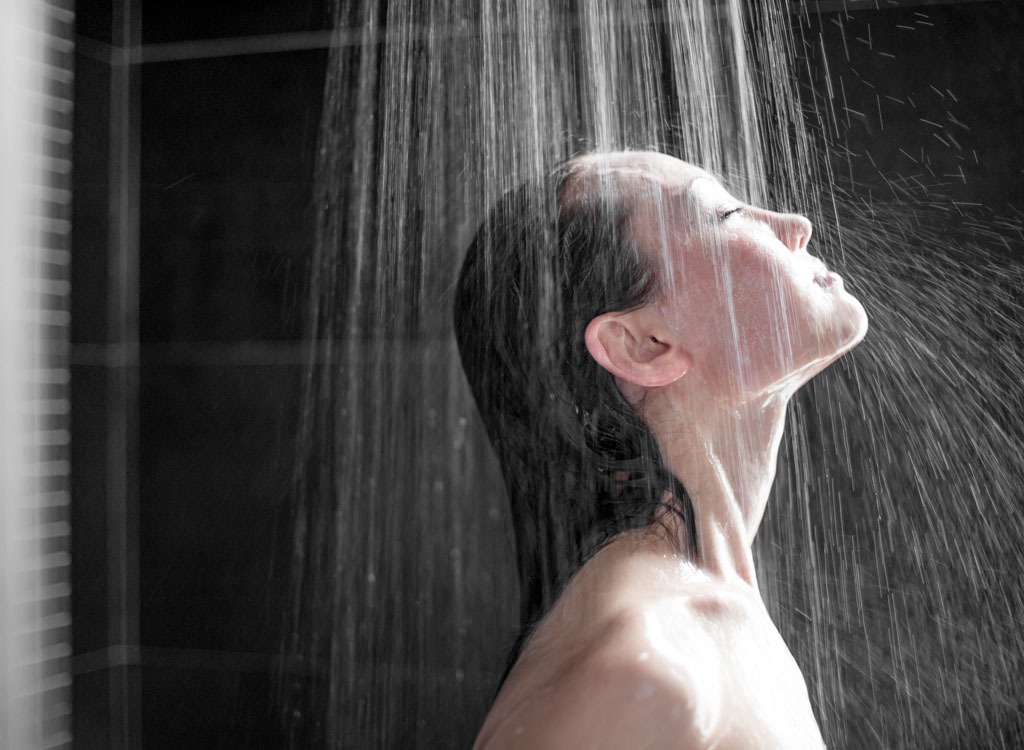
Each time you rinse off, you may also be exposed to a nasty pathogen called Mycobacterium avium. A University of Colorado study concluded that 30 percent of showerheads play host to significant levels of the pathogen, which clings to the inside of the showerhead in a slimy biofilm. This pathogen has been linked to pulmonary disease, which can cause fatigue, shortness of breath, and a dry cough, especially if your immune system is already compromised. Speaking of your immune system, make the most of these 17 Immunity Boosters Better than Emergen-C this season!
Salmonella

Although salmonella is typically associated with food poisoning (think undercooked or raw chicken), it may also be lurking in water. This icky bacteria, which causes vomiting and diarrhea, can be found in well water and streams, according to a study from the University of Georgia. If your drinking water comes from a well or if you spend your summer months kayaking, you could be at risk.
Estrogen
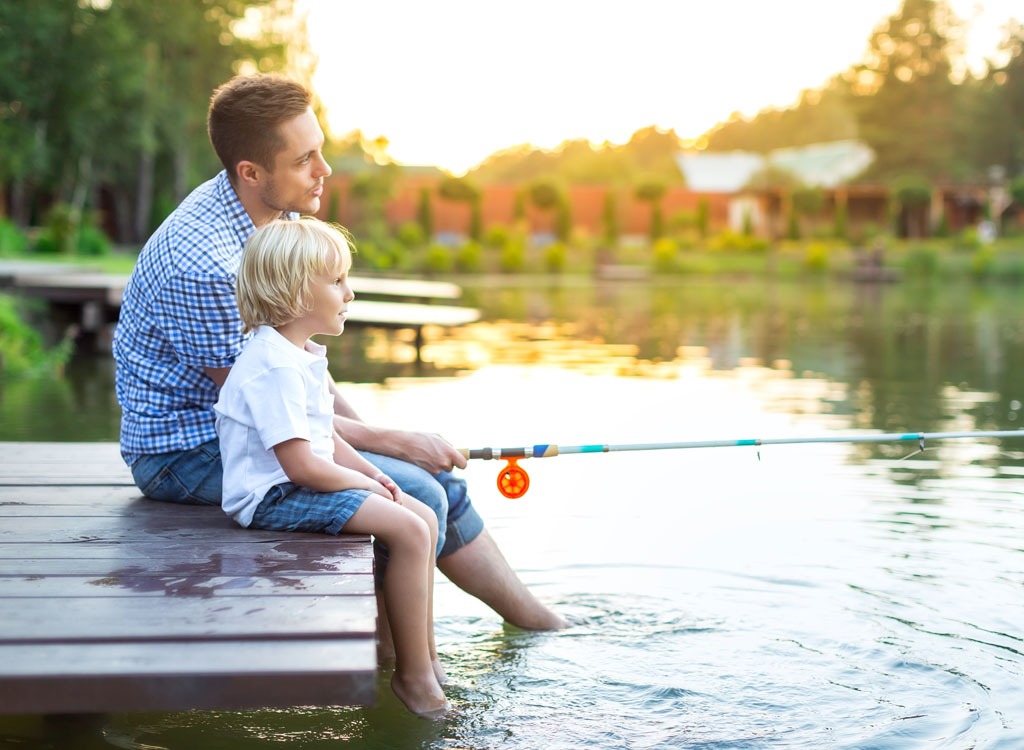
Estrogen, the primary female sex hormone, is found in the nation's drinking water supplies. According to research from the University of New Brunswick, these female sex hormones can cause male fish to become feminized; some even developed eggs. Of course, that's just fish, but the study's author said the findings raise concerns about estrogen in our water; some researchers believe the widespread use of birth control pills has contributed to synthetic estrogen being found in lakes and bodies of water. If your hormones are out of whack, here are 15 Hormone-Balancing Superfoods to add to your next grocery list.
Mold
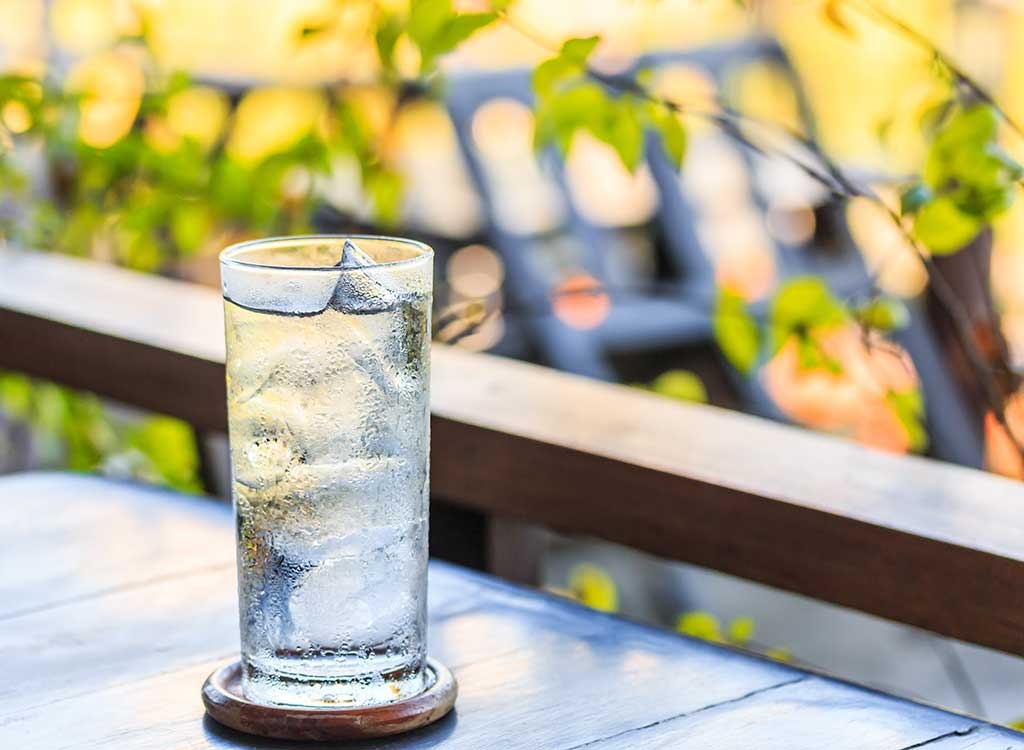
It's common for restaurants around the country to fail health inspections because officials find mold inside their ice machines. Additionally, a study from the University of Nevada Las Vegas found that 72 percent of restaurant ice samples contained coliform bacteria, aka bacteria found in the digestive tracts and feces of humans and animals. As for the mold, it can grow in your home freezer, especially if you turn it off for periods of time (like in vacation homes). The solution? Deep clean your freezer regularly and consider skipping the ice in your water when you eat out. And don't forget to steer clear of the office ice maker, too.
Rocket Fuel
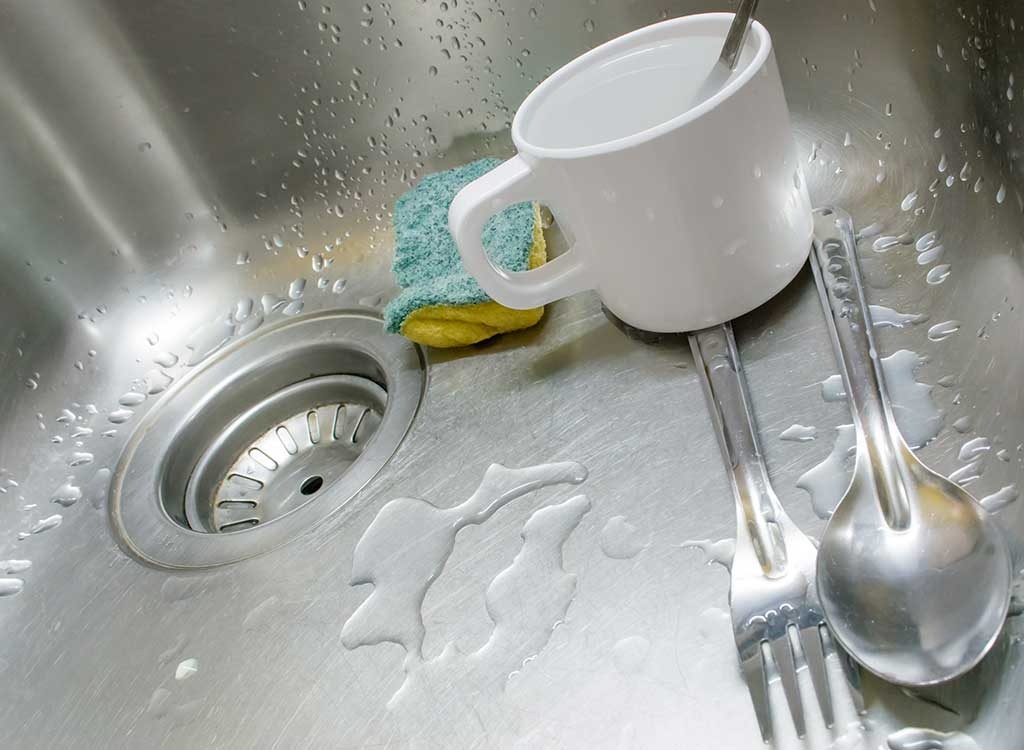
You read that right. Perchlorate, the explosive ingredient in rocket fuel and fireworks, can be found in some foods and drinking water supplies. It's scary stuff, too. After studying mothers and their children, researchers at Boston University School of Medicine say perchlorate can lead to lower-than-average IQ levels in children. A reverse osmosis filter, also known as a whole house water filter, will remove perchlorate from your water.
Toxic Lead

The drinking water in Flint, Michigan, became contaminated with lead after the city changed its water supply and failed to treat the water with a corrosion inhibitor. Though most municipal water suppliers treat their water with a substance that coats the pipes and prevents lead from leaching into the water, it's not always foolproof. According to the American Academy of Pediatrics, lead exposure can cause cognitive and behavioral issues in children but can be avoided with a home filtration system.
BPA
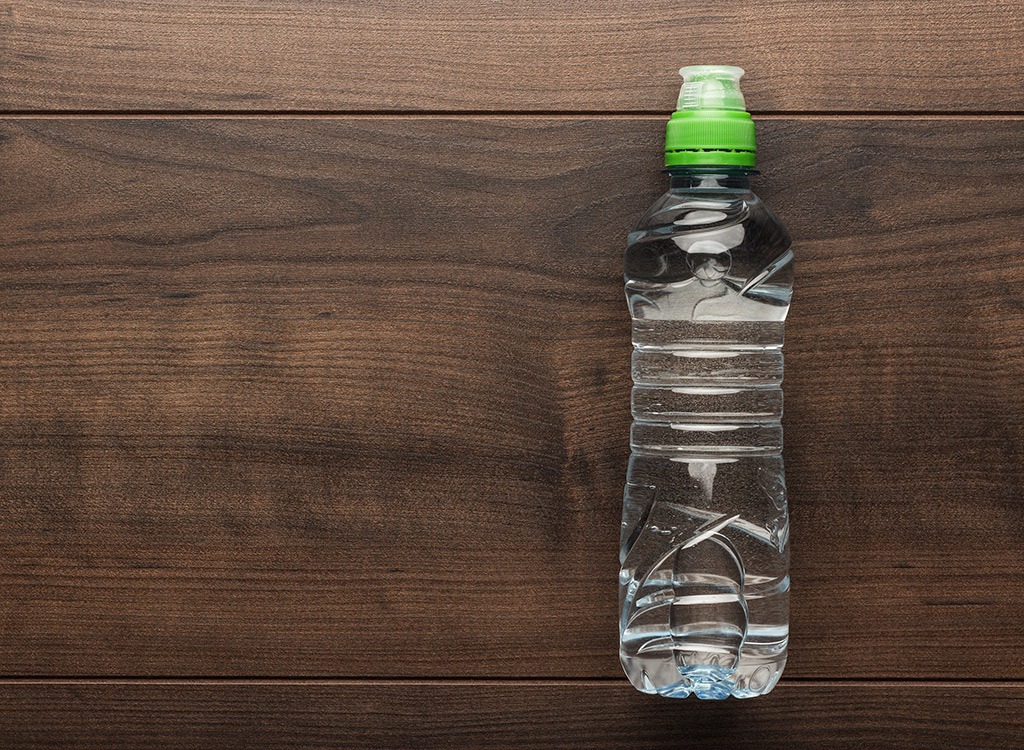
BPA, short for Bisphenol A, is an industrial chemical used to make plastics, like the kind found in some water bottles. Exposure to BPA has been linked to some pretty scary stuff: developmental problems, anxiety, depression, and autism. Invest in a BPA-free reusable water bottle and don't reuse your disposable plastic water bottles, which break down very quickly. You'll also want to rethink how often you rely on canned soups since BPA usually lines the inside of canned food. DIY your bowls of soup with these 20 Best Fat-Burning Soup Recipes instead.
Cryptosporidium

Cryptosporidium is a nasty parasite that causes diarrhea and is especially harmful to children under the age of 2-years-old. According to researchers at the University of Georgia, it's most commonly spread through drinking and recreational water. The most extreme example of cryptosporidium affecting a city's water supply was in Milwaukee in 1993, when 400,000 people got sick. Since this bug is often found in swimming pools, always keep your mouth shut when you go for a dip.
Poop Particles
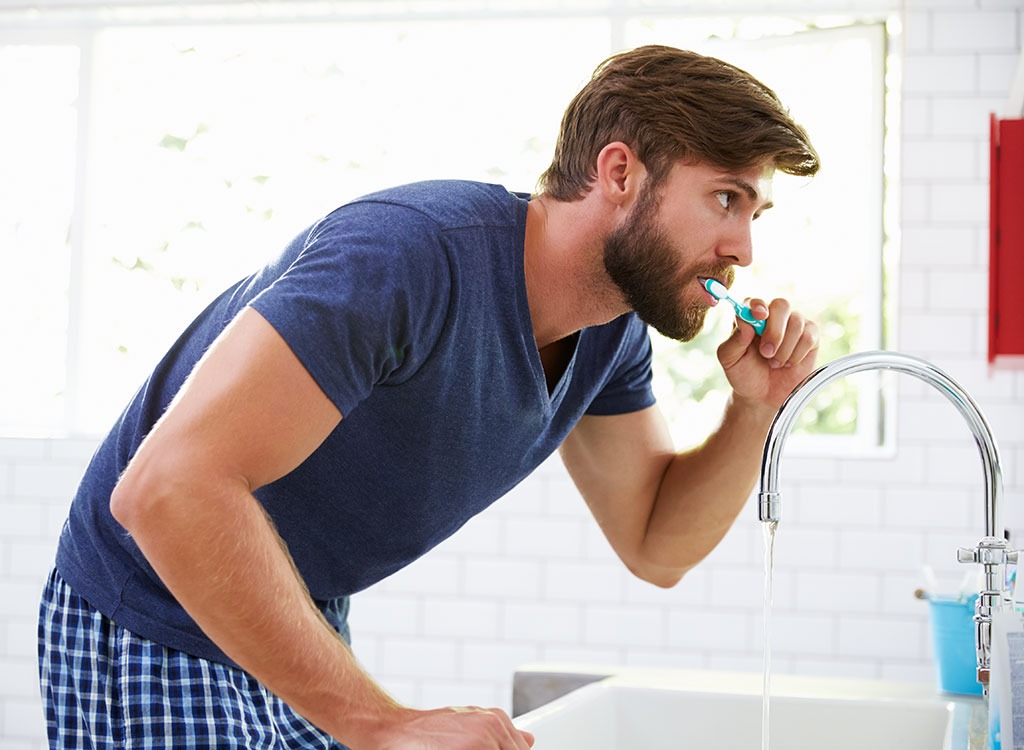
It's probably not a secret that your toilet water contains some truly vile stuff. And if those nasties stayed inside your toilet, they probably wouldn't be a big deal. But every time you flush, those fecal coliforms (aka poop particles) get transferred to other parts of your bathroom—including your toothbrush. A study from Quinnipiac University found that toothbrushes harbor bacteria, viruses, and parasites. They're especially dirty if you have a roommate or share a bathroom with your spouse.
Chemicals from Appliances

The water from your household appliances—such as dishwashers and washing machines—can contain trace amounts of harmful chemicals. These toxins become problematic when they get transferred from water to the air inside your home, according to a study at the University of Texas at Austin. In fact, the researchers determined that breathing in these chemicals can be more damaging than drinking the water. The next time you open up your steaming dishwasher, open a window and turn on a fan. It's not just dishwashers that are gross; find out the 17 Dirtiest, Grossest Things In Your Kitchen!
Cleaning Agents

Going for a dip in your health club's lap pool to get bikini ready may not be as healthy as you think. Pool managers use tons of chemicals to disinfect the water (chlorine being the most obvious one) and make it safe for swimmers. But researchers at the University of Illinois found that these disinfectants can react with all of the hair, sunscreen, urine, and sweat that's in the water—which turns them into more toxic substances. These mutated cleaning agents have been linked to gene mutations, birth defects, accelerated aging, and respiratory problems.
Norovirus
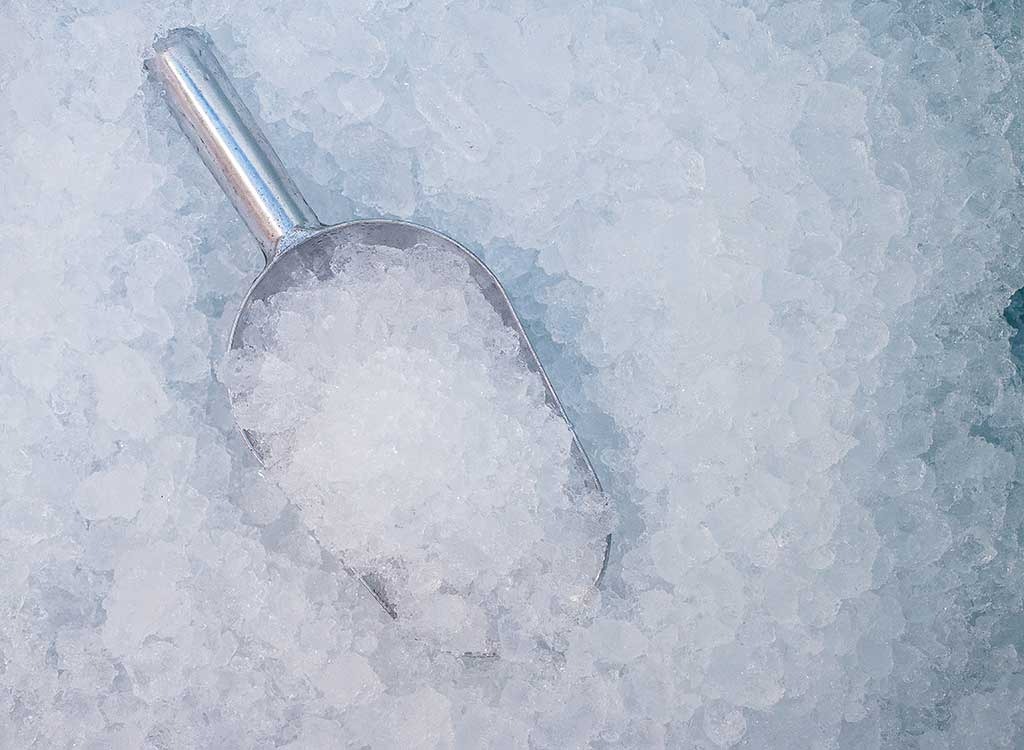
This nasty stomach bug can cause diarrhea, vomiting, nausea, and fever. In rare instances, it can lead to death. That's exactly what happened to a 15-year-old boy in Phoenix, Arizona, who died after drinking from a cooler at a junior golf tournament. Health officials guessed that a sick employee who didn't wash his hands contaminated the ice in the coolers, which caused dozens of golfers to get sick. Bottom line: Always wash your hands—and if you can't confirm the person handling your ice or water did too, maybe steer clear.
Caffeine
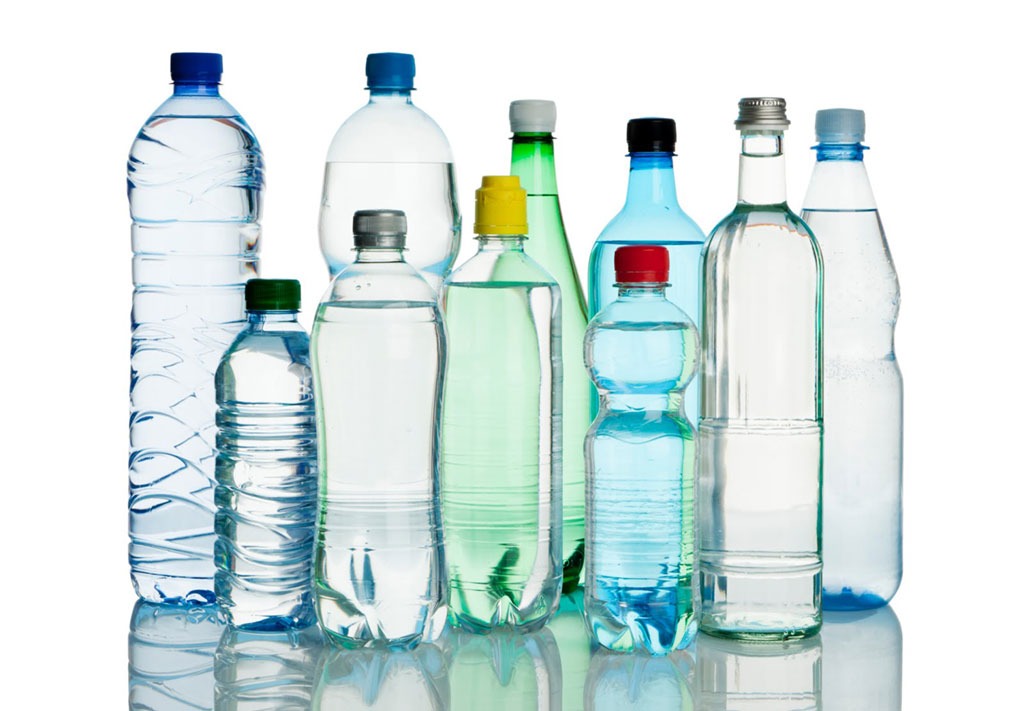
You're likely getting your daily caffeine fix from a cup of Joe at some point during the day. But did you know some beverage manufacturers are also adding caffeine to bottled water? The good news: If a bottle of water contains caffeine, it will be displayed prominently on the label and you just need to look for it. As with any other caffeinated drink, this water isn't as harmful to your health when consumed in moderation; in fact, researchers say that consuming some caffeine can actually produce health benefits. But caffeine has also been linked to overeating, premature aging, and miscarriages, so watch how much you chug. And then discover the 30 Healthy Foods You Better Eat in Moderation for more usually-innocent foods.
